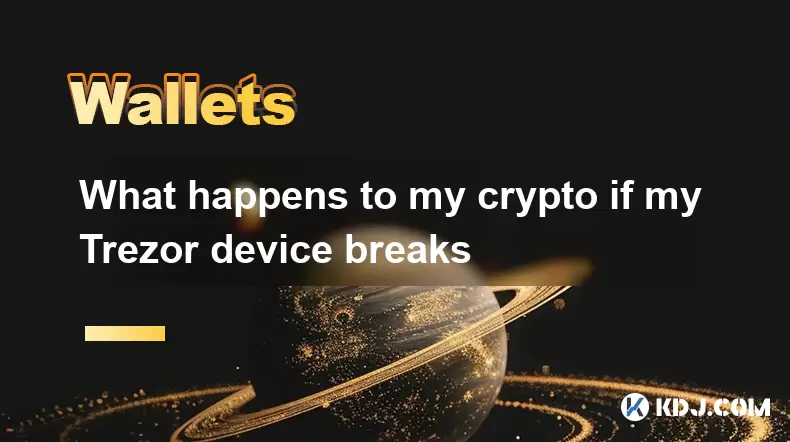-
 Bitcoin
Bitcoin $117,991.5647
-0.03% -
 Ethereum
Ethereum $2,966.4808
0.18% -
 XRP
XRP $2.8076
0.64% -
 Tether USDt
Tether USDt $1.0003
0.00% -
 BNB
BNB $689.9050
-0.63% -
 Solana
Solana $162.0407
-0.80% -
 USDC
USDC $0.9999
0.00% -
 Dogecoin
Dogecoin $0.1995
-1.51% -
 TRON
TRON $0.3001
-1.21% -
 Cardano
Cardano $0.7426
3.25% -
 Hyperliquid
Hyperliquid $47.7978
2.84% -
 Stellar
Stellar $0.4411
16.52% -
 Sui
Sui $3.4267
0.15% -
 Chainlink
Chainlink $15.3148
0.07% -
 Bitcoin Cash
Bitcoin Cash $506.5880
-1.91% -
 Hedera
Hedera $0.2222
12.41% -
 Avalanche
Avalanche $21.2049
1.67% -
 UNUS SED LEO
UNUS SED LEO $9.0606
-0.19% -
 Shiba Inu
Shiba Inu $0.0...01325
-0.86% -
 Toncoin
Toncoin $2.9979
0.32% -
 Litecoin
Litecoin $94.3717
1.13% -
 Polkadot
Polkadot $3.9873
-0.29% -
 Monero
Monero $336.1497
0.92% -
 Dai
Dai $0.9999
-0.01% -
 Uniswap
Uniswap $8.5189
-0.60% -
 Ethena USDe
Ethena USDe $1.0005
-0.04% -
 Pepe
Pepe $0.0...01236
-0.92% -
 Bitget Token
Bitget Token $4.4002
-0.23% -
 Aave
Aave $303.5433
1.05% -
 Bittensor
Bittensor $391.1314
-0.35%
What is the difference between a custodial and non-custodial wallet
Cryptocurrency wallets fall into two main types: custodial, where a third party manages private keys, and non-custodial, where users retain full control.
Jul 13, 2025 at 03:21 am

Understanding Wallet Types in Cryptocurrency
In the world of cryptocurrency, digital wallets play a crucial role in managing and securing assets. A wallet is essentially a software program that allows users to store, send, and receive digital currencies. However, not all wallets function the same way. There are two primary categories: custodial and non-custodial wallets. Each type offers distinct features, security levels, and control mechanisms over private keys.
Custodial Wallets Explained
Custodial wallets operate similarly to traditional banking systems, where a third-party service holds and manages your private keys on your behalf. When you use platforms like Binance, Coinbase, or Kraken, you're typically using a custodial wallet. These services handle the encryption and storage of your keys, which means you don’t have direct access to them.
This setup provides convenience for users who prefer not to deal with the technicalities of key management. However, it also introduces risks such as reliance on the platform's security measures and potential vulnerability to hacking or regulatory actions. Users must trust the custodian to safeguard their funds and maintain operational stability.
Non-Custodial Wallets Explained
Non-custodial wallets give full control of private keys to the user, meaning only the owner has access to their cryptocurrency. Examples include MetaMask, Trust Wallet, and hardware wallets like Ledger or Trezor. With these wallets, there is no intermediary involved in transactions—users interact directly with the blockchain network.
While this grants greater autonomy and reduces dependency on third parties, it also places the burden of security entirely on the user. If a private key is lost or stolen, there is no recovery mechanism, and the associated funds become permanently inaccessible.
Key Differences Between Custodial and Non-Custodial Wallets
- Control Over Private Keys: In custodial wallets, private keys are managed by the service provider. In non-custodial wallets, users retain complete control.
- Security Responsibility: Custodial wallets shift the responsibility of security to the provider, while non-custodial wallets require users to implement their own protective measures.
- Recovery Options: If you lose access to a custodial wallet, support teams may assist in account recovery. In contrast, losing a private key for a non-custodial wallet results in irreversible loss of funds.
- Ease of Use: Custodial wallets often offer a more user-friendly experience with simplified interfaces and integrated support. Non-custodial options can be more complex, especially for beginners.
- Regulatory Risk: Custodial services may be subject to government regulations and could freeze accounts or restrict withdrawals under certain conditions. Non-custodial wallets generally avoid such issues since they aren't centralized entities.
Choosing the Right Wallet Type
Selecting between custodial and non-custodial depends largely on individual preferences and risk tolerance. Those who prioritize ease of use and customer support may lean toward custodial solutions, while those who value decentralization and full ownership of assets will likely choose non-custodial alternatives.
It’s also important to consider how frequently you trade or transact. Active traders might find custodial wallets more convenient due to faster transaction times and integration with exchanges. Long-term holders who want maximum security and independence usually prefer non-custodial options.
Additionally, diversifying across both types can be a strategy. For instance, keeping small amounts in a custodial wallet for daily transactions and storing larger holdings in a non-custodial wallet for enhanced security.
Operational Guide: Setting Up a Custodial Wallet
Setting up a custodial wallet involves several straightforward steps:
- Choose a reputable exchange or wallet provider — Research and select a trusted platform with strong security measures and positive user reviews.
- Create an account — Provide necessary personal information and complete identity verification if required.
- Enable two-factor authentication (2FA) — This adds an extra layer of protection against unauthorized access.
- Deposit funds — Transfer cryptocurrency from another wallet or purchase directly through the platform.
- Monitor and manage your assets — Use the dashboard to track balances, send or receive crypto, and view transaction history.
Each step should be performed carefully, ensuring that email and phone number linked to the account are secure.
Operational Guide: Setting Up a Non-Custodial Wallet
Creating a non-custodial wallet requires more attention to detail, especially regarding private key management:
- Download and install a trusted wallet app — Choose apps like MetaMask, Trust Wallet, or hardware wallet firmware from official sources.
- Create a new wallet — Follow the setup process, which will generate a unique wallet address and a 12- or 24-word recovery phrase.
- Securely back up the recovery phrase — Write it down on paper and store it in a safe location. Never share this phrase with anyone.
- Set a strong password — Protect access to the wallet interface with a complex password.
- Transfer funds securely — Send small test transactions first to ensure everything works before moving large amounts.
These steps help ensure that the wallet remains under your control without relying on any external party.
Frequently Asked Questions
Q: Can I switch from a custodial to a non-custodial wallet?
Yes, you can transfer your cryptocurrency from a custodial wallet to a non-custodial one. Simply withdraw the funds from your custodial wallet and send them to your non-custodial wallet address.
Q: Are custodial wallets always hosted on exchanges?
Most custodial wallets are offered by exchanges, but some independent wallet services also provide custodial options. Always verify whether the wallet gives you access to private keys.
Q: What happens if a custodial wallet company shuts down?
If a custodial service closes, users may face difficulties retrieving their funds unless the company provides a clear migration or withdrawal process. It’s wise to keep significant holdings in non-custodial wallets.
Q: Is it safe to store large amounts in a custodial wallet?
Storing large sums in a custodial wallet carries inherent risks, including platform vulnerabilities and regulatory interference. For substantial holdings, a hardware-based non-custodial wallet is generally safer.
Disclaimer:info@kdj.com
The information provided is not trading advice. kdj.com does not assume any responsibility for any investments made based on the information provided in this article. Cryptocurrencies are highly volatile and it is highly recommended that you invest with caution after thorough research!
If you believe that the content used on this website infringes your copyright, please contact us immediately (info@kdj.com) and we will delete it promptly.
- HYPE Token & Hyperliquid: Riding the DeFi Wave with Open Interest
- 2025-07-13 16:30:16
- Unilabs Finance Takes Center Stage: Leaving Pepecoin and Floki Inu in the Dust?
- 2025-07-13 16:30:16
- Crypto Investors Ditching Meme Coins for BlockchainFX: The Smart Money Move?
- 2025-07-13 17:05:16
- Bitcoin, Indian Investors, and Tax Filing: Navigating the Crypto Boom
- 2025-07-13 17:05:16
- Ethereum's Resistance Level: Bullish Signals Point to Potential Breakout
- 2025-07-13 17:05:17
- Whale Watching: XRP's Historic Highs and the Whale Control Factor
- 2025-07-13 17:05:17
Related knowledge

What is a hardware wallet's secure element
Jul 11,2025 at 10:14pm
What is a Hardware Wallet's Secure Element?A hardware wallet is one of the most secure ways to store cryptocurrencies. Unlike software wallets, which ...

What is the difference between a custodial and non-custodial wallet
Jul 13,2025 at 03:21am
Understanding Wallet Types in CryptocurrencyIn the world of cryptocurrency, digital wallets play a crucial role in managing and securing assets. A wal...

How to add a new network to MetaMask
Jul 11,2025 at 11:42pm
Understanding the Need to Add a New NetworkWhen using MetaMask, a popular Ethereum-based cryptocurrency wallet, users often need to interact with diff...

How to add Ethereum L2 networks like Arbitrum to Trezor
Jul 11,2025 at 12:36am
What Is Ethereum L2 and Why Add It to Trezor?Ethereum Layer 2 (L2) networks, such as Arbitrum, are scaling solutions designed to reduce congestion on ...

What happens to my crypto if my Trezor device breaks
Jul 11,2025 at 01:49pm
Understanding Hardware Wallet FailureWhen you store cryptocurrency in a Trezor hardware wallet, the private keys are kept offline, offering a high lev...

How to find a specific receiving address on my Trezor
Jul 09,2025 at 10:36pm
Understanding the Purpose of a Receiving AddressA receiving address is a unique identifier used in blockchain networks to receive cryptocurrency. Each...

What is a hardware wallet's secure element
Jul 11,2025 at 10:14pm
What is a Hardware Wallet's Secure Element?A hardware wallet is one of the most secure ways to store cryptocurrencies. Unlike software wallets, which ...

What is the difference between a custodial and non-custodial wallet
Jul 13,2025 at 03:21am
Understanding Wallet Types in CryptocurrencyIn the world of cryptocurrency, digital wallets play a crucial role in managing and securing assets. A wal...

How to add a new network to MetaMask
Jul 11,2025 at 11:42pm
Understanding the Need to Add a New NetworkWhen using MetaMask, a popular Ethereum-based cryptocurrency wallet, users often need to interact with diff...

How to add Ethereum L2 networks like Arbitrum to Trezor
Jul 11,2025 at 12:36am
What Is Ethereum L2 and Why Add It to Trezor?Ethereum Layer 2 (L2) networks, such as Arbitrum, are scaling solutions designed to reduce congestion on ...

What happens to my crypto if my Trezor device breaks
Jul 11,2025 at 01:49pm
Understanding Hardware Wallet FailureWhen you store cryptocurrency in a Trezor hardware wallet, the private keys are kept offline, offering a high lev...

How to find a specific receiving address on my Trezor
Jul 09,2025 at 10:36pm
Understanding the Purpose of a Receiving AddressA receiving address is a unique identifier used in blockchain networks to receive cryptocurrency. Each...
See all articles

























































































